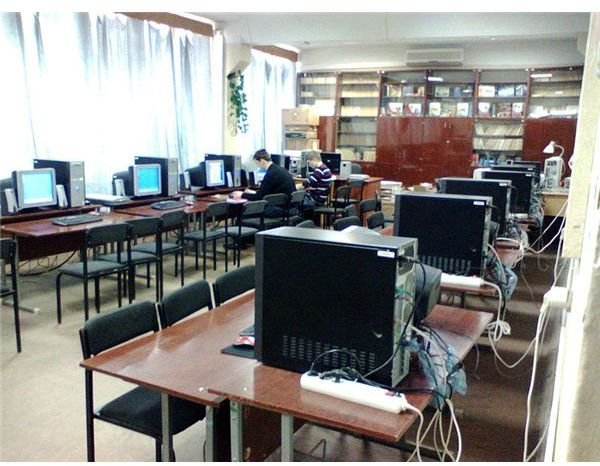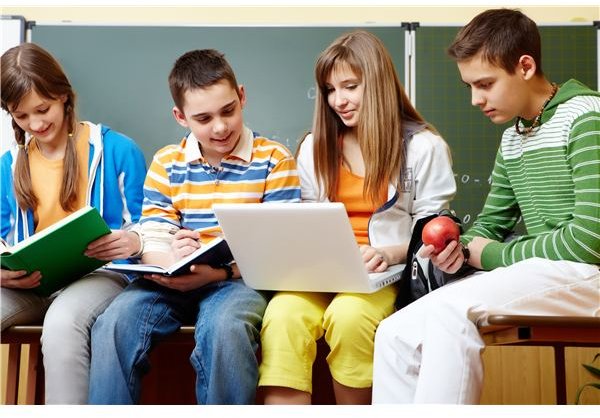A Look at How and Why Social Media Is Transforming Education
About Social Media
Social media is a term for interactions between individuals using tools such as mobile or Internet-based technologies. These
microblogging platforms were created to publish and exchange content as well as build relationships and interaction with others in virtual communities. They evolved into tools for marketing products and individuals, developing brands, leveraging market space and disseminating information all with the simple click of a mouse. Now educators worldwide are discovering how these technologies can serve a vital purpose as teaching resources.
Educational Impact
How big is the impact of social media in teaching? Well, according to a Pearson survey, while 47 percent of those employed in industries other than the field of college faculty used social media in the course of their employment, a whopping 91 percent of college faculty utilized social media in their work.
Why the focus on social media? Using such sites for online class discussion allows for faster communication and instant feedback and gives more students the opportunity to interact. It enhances the learning experience for students by making it easier to learn from lessons that incorporate multimedia and increased, and in some cases, global interaction. Because much of it occurs in real-time, it saves time and money and allows instruction to take place regardless of time or geographic constraints.
However, do educators really use these tools? Yes, they do according to School.com, which reports that “Nearly all professors are active on social media, and 80 percent of them use it as a teaching tool.” While some educators who are technologically challenged may be intimidated by social media or worry that their comments and content may be misinterpreted, it‘s clear to see that the vast majority of these individuals have embraced the Internet and social media as a welcome teaching resource.
How Educators Benefit

Educators use social media in various ways to benefit themselves personally and professionally. They may utilize them as a virtual bulletin board or as a tool to streamline activities such as scheduling events, sharing lessons plans and multimedia presentations, or providing consultations.
They connect with other educators for support, inspiration, resources and share tips about lesson planning, classroom management and educational policies. Instead of being limited to networking with others at their school or local professional communities, they have access to a worldwide network of professional educators who can be contacted 24/7. Students can provide positive feedback which helps educators tweak future lessons.
Because the interactions are virtual, shy students feel more confident joining in discussions than they might in a traditional classroom setting, and educators see increased participation in such discussions. These do not replace classroom discussions but expand on them and enhance them by adding multiple layers of opinions and viewpoints.
How Students Benefit
The ease of use of social media sites allows children to express their thoughts and publish their writing, thus honing these skills. They can build an audience and improve their literacy skills, while sharing their written works with a far larger readership than ever before.
Writing online is easier for kids and a familiar use of technology such as computers and the Internet. The same child who blanks out when faced with a piece of paper finds it easy to type a few lines of text to post a comment on a social media site.
They get to play with and become proficient with other media like images and graphics, which could help them express their thoughts and feelings better than just using words. Students can read each other’s work and learn from it in a non-threatening environment, and they learn to be brief and concise in their writing (think 140 characters on Twitter). Students have access to more than just one authority on a subject (the teacher) as they can access information from a wider pool of resources and experiences.
Kinds of Social Media
While a recommended social media chart for educators would vary depending on the individual preferences of those surveyed or the methods used, there are some sites whose names continually appear as favorites for providing the greatest social media impacts on education such as Facebook, Twitter, YouTube, LinkedIn and Digg. Here’s a few of the most popular sites and a brief look at ways teachers are utilizing them.
Facebook allows teachers to upload lessons, images and PowerPoint presentations. They can create unique applications and separate pages to allow them to offer homework help or tutor students. E-learning can take place over holidays or in case of missed school days due to inclement weather. The chat feature can be used for real-time question and answer sessions, pop-quizzes or even to stimulate creativity. For instance, teachers can post word plays or vocabulary shout-outs to help students who are suffering from writer’s block.
Warning: Facebook is a dual edged tool that can be potentially beneficial or dangerous to teachers depending on how it is used. Be aware that although the intention is for only friends to view what is posted on a Facebook page, there are instances of private postings going public and viral. If individuals would not want any immediate superior to read a message, they shouldn’t post it.
Twitter offers real-time two-way communication that can be used for a variety of teaching support applications. Teachers can post online quizzes or questions and get instant student answers. They can post shout-outs on topics of interest or take online polls and collect data. It’s an excellent way to keep parents in the loop as they can follow the teacher(s) and receive continuous updates on the class status, work in progress or even video feeds from field trips or sports events.
Video Sharing
Video sharing via sites like YouTube, TeacherTube and SchoolTube have opened up brand new educational vistas for students and teachers. By using video-sharing sites, teacher save time and money because they do not have to create their own multimedia to enhance lessons; they simply tap the resources that are already available. There are lots of videos on YouTube and other sites that can be used for supplemental information or to inspire student creativity. Many of these sites allow students and teachers to work together to produce the videos, which allows students to gain valuable skills.
Warning: Many schools block access to YouTube because of the uncertain nature of the quality and content of the posted videos. Teachers should preview all content and have it approved prior to showing it to their students.
LinkedIn offers ways to find lesson plans, exchange ideas, and get tips on classroom management and other strategies. Teachers can create club pages for student clubs and share information with all the club members, or use the platform to network and advance their career.
Digg
Teachers use Digg to share world news on various topics with students who then provide their feedback via the comments feature. Videos and pictures can be uploaded as well as blog posts and web pages.
Internet Safety and Other Precautions
It’s important to review the rules for Internet safety with students and to never allow them to post anonymously. If the school has written guidelines for Internet use, they should be followed rigorously. If there are no written guidelines in places, educators might consider devising their own for students to follow.
There is an idiom about fire being a good servant but a poor master because of the danger of getting hurt, and the same is true of the use of social media in teaching or any virtual interactions as there is the potential for misuse.
Posted content does not go away easily and can be distorted or misconstrued, especially pictures and other personal data. Sites are not as private as one may think as posts can be retweeted and shared with others and could jeopardize a person’s employment if an unwise complaint or comment was brought to the attention of the wrong person. Some unscrupulous individuals hide behind anonymous identities and use the web to prey on children.
Venting frustrations online or making fun of students, posting inappropriate images of children, or posting derogatory comments are red flags of potential problems. Any such instances should be reported to the appropriate authorities immediately.
The judicious use of social media sites helps teachers and students work more efficiently, communicate faster, and increase performance and participation. A definite plus of using these sites in education is that parents can be as involved with their student’s educational process as they choose to be and even receive real-time notifications of problems or concerns. Educators can monitor progress and work quickly to intervene when help is needed most.
Disclaimer
Be aware that some school districts may limit or block the use of social media sites such as Facebook and Twitter.
References
Dwyer, Liz, “Why Twitter is a Teacher’s Best Tool,” Good - a magazine for the global citizen.
Schulten, Katharine, “Three Teachers’ Answers to Questions About Classroom Microblogging,” The New York Times.
De Avila, Joseph, “Teachers Tap Video-Sharing in the Classroom,” The Wall Street Journal.
Lynch, Loreal, “How College Professors Use Facebook,” on Schools.com.
Image Credit
Computer class by Kahonye Kuna under Public Domain
